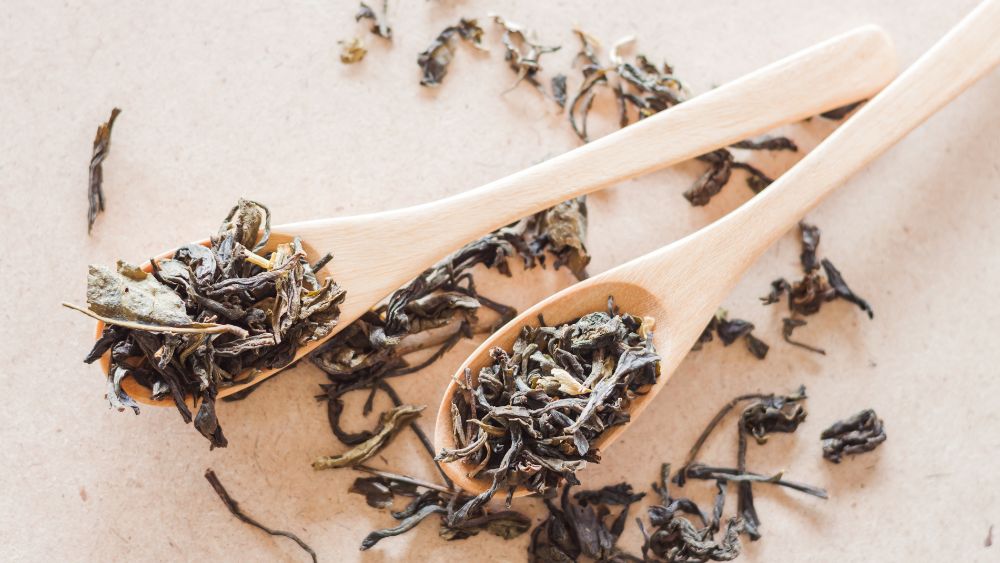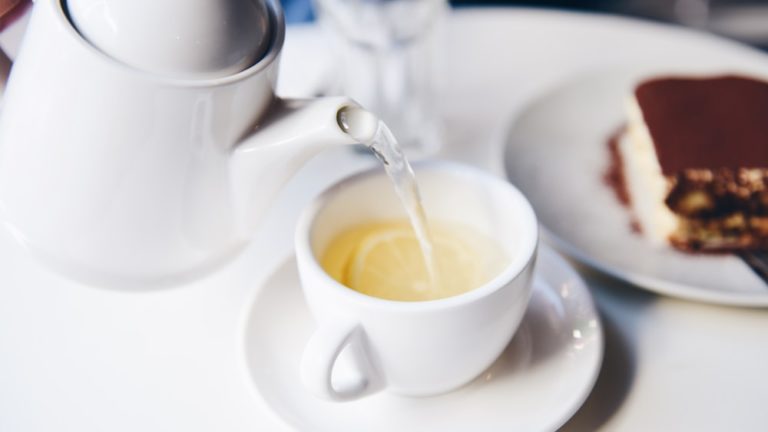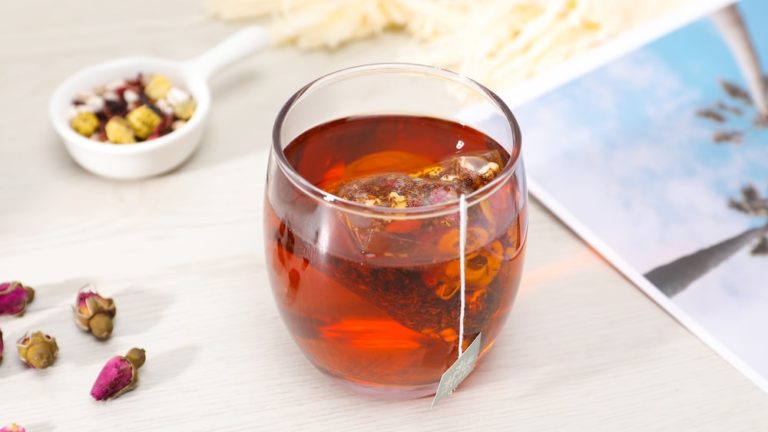Relieve Acid Reflux Naturally With Oolong Tea

Relieve Acid Reflux Naturally With Oolong Tea
Ah, tea – that comforting, warm elixir that has been soothing souls and calming minds since time immemorial. It’s the liquid hug that wraps its arms around us on those dreary afternoons and the spirited companion to our morning contemplations. But what if this ancient brew could also be a secret weapon against the fiery dragon known as acid reflux? For folks who’ve felt that searing sensation more times than they’d like to admit, let’s dive into the world of oolong tea acid reflux relief – the potential natural balm for our beleaguered bellies.
Key Points:
- Oolong tea may offer natural relief for acid reflux symptoms.
- Acid reflux occurs when stomach acid moves up the esophagus, causing discomfort and other symptoms.
- Certain foods and beverages, like spicy foods and alcohol, can trigger acid reflux, while others, like lean proteins and alkaline vegetables, may help alleviate symptoms.
- Oolong tea should be brewed with filtered water at a specific temperature and consumed 2 to 3 times a day, preferably before meals.
- Other natural remedies, such as ginger tea and herbal teas like chamomile, may also help ease acid reflux symptoms.
- It’s important to be cautious of potential side effects of oolong tea and consult with a healthcare professional if symptoms persist.
In this cozy nook of the internet, we’ll explore how the subtle leaves of oolong can wage war against the burn. We aren’t just talking about a possible remedy here; we’re neck-deep in the art, the culture, and, oh yes, the science of this potential gastrointestinal knight in shining armor. Oolong tea has been steeping quietly in the background, but it may just be our gastronomic hero waiting to be called into action.
So, my fellow tea enthusiasts and health-conscious pals, let’s embark on this journey with our steaming cups in hand. Whether you’re a newbie to the world of oolong or an old hand with a teapot that’s seen more steeps than the Himalayas, this read promises to be a treasure trove of wisdom with a dash of whimsy. Stay tuned, sip carefully, and let’s unravel the mystery behind oolong tea acid reflux remedies.
Understanding Acid Reflux and Its Symptoms
If heartburn were a person, it’d be that unpredictable guest at your dinner party, sometimes popping in unannounced and often overstaying its welcome. Acid reflux, that uncomfortable sensation where stomach acid decides to backtrack into the esophagus, can be a real party crasher, triggering not just heartburn but a host of other unwelcome symptoms.
Defining Acid Reflux and GERD
Now, to set the stage, let’s define our antagonist. Acid reflux, that common culinary buzzkill, occurs when the lower esophageal sphincter decides to loosen up and let stomach acid climb up the esophagus, typically after a heavy or spicy meal. Imagine your stomach’s contents doing the electric slide back up your throat – not the kind of boogie you’re into, right?
But let’s crank up the seriousness knob. When acid reflux is a regular uninvited guest, say hello to its more-determined cousin, Gastroesophageal Reflux Disease (GERD). This is when the esophagus starts keeping a grudge against all the acidic onslaught and begins to complain more vocally and frequently – kind of like your neighbor when you practice bagpipes at midnight.
Acid reflux occurs when the lower esophageal sphincter allows stomach acid to climb up the esophagus, potentially leading to the more serious condition of Gastroesophageal Reflux Disease (GERD).
Common Symptoms and Triggers of Acid Reflux
When acid reflux hits, oh, you’ll know it – it’s like hosting an unwelcome culinary rave in your chest. The symptoms can be as subtle as a gentle, nagging discomfort, or as dramatic as a chest pain that has you mistaking your indigestion for a heart attack. Here’s a bite-sized list of what you might experience:
- Burning sensation in the chest (heartburn)
- Sour or bitter taste at the back of the mouth
- Swallowing difficulties
Feeling like you’ve swallowed a charcoal briquette isn’t fun, but it’s the reality for many. So what sets off this internal volcano? Common triggers include:
- Spicy foods: You know, those meals that make you feel like a dragon.
- Fatty meals: All that greasy goodness can backfire.
- Carbonated drinks: That fizzy indulgence might just lead to some sizzling consequences.
Avoiding particular noshes can help keep your esophagus from feeling like it’s auditioning for a fire-breathing act.
The Role of Diet in Managing Acid Reflux
If you’re battling acid reflux, your diet is like the battlefield strategy – essential for winning the war against those stomach acid insurgents. What goes down the hatch significantly affects whether you’ll emerge victorious or bow down to the revolt happening in your gut.
Foods and Beverages to Avoid
Now let’s play a little game of dietary dodgeball – with our stomachs being the target. If you’re aiming to thwart acid reflux, there are certain foods that you’d want to dodge like a pro. Here’s a lineup of usual suspects that need to beside-stepped:
- Tomatoes and citrus fruits – they’re as acidic as your grandma’s wit.
- Chocolate – sometimes, sweet sorrow must be parted.
- Alcohol – sorry, but those spirits might haunt youresophagus.
Think of it as an esophageal peace treaty – certain concessions for the greater good of yourgut health.
Avoiding certain acidic and triggering foods can help prevent acid reflux and support gut health in a dietary dodgeball game against stomach discomfort.
Dietary Changes for Acid Reflux Relief
Making friends with acid reflux involves a certain foody finesse – a delicate waltz of the wills between you and your plate. Let’s build a menu for a truce:
- Lean proteins: They lie light in your stomach, unlike their fattier comrades.
- Alkaline vegetables: These are the peacemakers in the acid-base tussle.
Merging these friendly foods into your meals can create an inner environment less conducive to acid reflux rebellion. It’s like negotiating with your insides for a ceasefire.
Oolong Tea: A Potential Natural Remedy for Acid Reflux
Best Practices for Brewing Oolong Tea
When it comes to crafting the perfect cup of oolong tea, the devil is in the details. To soothe your acid reflux naturally, you’ll want to steep this medicinal brew just right. Begin with filtered water to avoid impurities that might play hopscotch with your sensitive esophagus. Heat it until it’s just about to stage a full-blown rebellion (that’s around 85°C to 95°C or 185°F to 205°F, for those of you with a thermometer in your arsenal).
Next, introduce your oolong leaves to the hot water like they’re old friends reuniting – gentle and warm, allowing them to spread their wings but not burn them! Steeping time is a bit of a waltz – typically between 3 to 5 minutes, depending on how bold you like your tea’s personality. Remember, the longer the steep, the stronger the polyphenols and antioxidants – valiant knights battling the acid reflux dragon lurking within.
Recommended Frequency and Timing of Oolong Tea Consumption
Now, if you’re wondering how often to invite this oolong elixir to your acid reflux relief party, let me offer a roadmap. Ideally, sip on oolong tea 2 to 3 times a day. Morning, afternoon, and early evening can be your three tea-times – as if oolong is the new British tradition we all needed. But cut the cord before you hit the pillar of nighttime; you don’t want caffeine doing the jitterbug in your system when you’re trying to count sheep.
On that note, timing is as crucial as the steeping ritual itself. Having oolong half an hour before meals can be the usher that guides your digestion to its seat, readying your system for a smooth performance. And if you fancy a bit of dessert mimicry without the guilt, sipping a cup an hour after meals might just ward off any unwelcome digestive revolts. However, listen to your body’s rhythm – it’s the ultimate conductor of your tea symphony.
Ideally, sip on oolong tea 2 to 3 times a day, with specific timing recommendations for each serving to aid in digestion and avoid disrupting sleep.
Other Natural Drinks and Remedies to Ease Acid Reflux Symptoms
While oolong tea stands as a mighty contender in the ring against acid reflux, it’s not flying solo. The natural remedies legion brims with other potential allies, waiting in the wings. Imagine a warm cup of ginger tea, containing the might of gingerol, a natural anti-inflammatory, or perhaps aloe vera juice, sans the aloin, sliding down your throat like a soothing balm.
Herbal Teas and Their Soothing Effects
In the tea corner, we have other herbal sages that might help you wrestle with the acid reflux beast. Take chamomile, the poster child for relaxation, known to quell the stomach storms. Or consider slippery elm, which is basically the tree’s version of giving your esophagus a calming hug. Licorice tea, not to be confused with the candy, can also be an ulcer’s adversary, coating your digestive tract like a protective armor.
Explore the soothing powers of chamomile, slippery elm, and licorice tea to combat acid reflux and provide relief for your stomach and digestive tract.
Non-Tea Beverages That May Help With Acid Reflux
Beyond the realm of teas, let’s not turn our noses up at the humble concoctions like coconut water or almond milk – both can be as gentle as a lullaby for an agitated stomach. Sipping on lukewarm water with a touch of lemon may sing a serenade to your senses, although lemons can be a double-edged sword for some. Always remember, these beverages, like a fine symphony, should play harmoniously with your body’s cues.
Precautions and Considerations When Using Oolong Tea for Acid Reflux
Despite oolong tea’s crown of health benefits, it’s smart to don the armor of caution. Even the best of natural remedies can throw a jester’s trick at you if not consumed wisely, particularly when dealing with the trickster that is acid reflux disease. So let’s be the savvy lords and ladies of our own manor and take heed of what the scrolls (or in this case, research) tells us.
Potential Side Effects of Oolong Tea
Oolong tea, while typically a balm, can sometimes stoke the fire of heartburn in sensitive subjects. Akin to a secret society, caffeine and tannins might conspire to increase stomach acid in some, triggering the very rebellion we’re trying to quell. Moreover, overindulgence in this otherwise noble brew could lead to sleep disturbances or a jittery sensation, akin to having a troupe of tap-dancers in your belly.
Be mindful of how much oolong tea you consume, as it can potentially exacerbate heartburn and lead to sleep disturbances or a jittery sensation.
When to Consult a Healthcare Professional
If oolong tea’s soothing powers seem more myth than magic for your symptoms, it’s time to knock on the wise sage’s door – that is, your healthcare provider. If bouts of heartburn are more frequent than the town crier’s announcements or if symptoms escalate, seek out the wisdom of a medical professional posthaste. They’re the Dumbledore to your Harry Potter – guiding you through the labyrinth of acid reflux disease with skill and expertise.
FAQs
1. Can oolong tea worsen acid reflux symptoms in some people?
Oolong tea can worsen acid reflux symptoms in some due to its caffeine and tannin content, which can potentially increase stomach acid in sensitive individuals.
2. How much oolong tea should I drink to help with acid reflux?
How much oolong tea you should drink for acid reflux is typically suggested at 2 to 3 cups per day, although it’s best to start with a lower amount and see how your body reacts.
3. Are there specific types of oolong tea that are better for acid reflux?
There aren’t specific types of oolong tea that are better for acid reflux, as individual responses vary; however, opting for a lower caffeine variety might be beneficial for sensitive individuals.
4. Can I drink oolong tea alongside my acid reflux medication?
Whether you can drink oolong tea alongside your acid reflux medication should be discussed with your healthcare provider, to ensure no interactions or adverse effects occur.
Conclusion
Ah, dear reader, our journey through the whiskered world of oolong tea acid reflux remedies is drawing to a close. We’ve danced with dragons (of the stomach variety), steeped in the knowledge of brewing practices, and even got acquainted with the court of non-tea beverages – all in the name of finding solace for that fiery sensation that dares disrupt our stomach’s peace.
Remember, while oolong tea acid reflux interplay offers a natural path to wellness, it’s always wise to tread with care and consult the sage advice of healthcare professionals as needed. As you look toward a future with tea cups brimming with the potential for relief, carry with you the insights from our shared adventure. Refine your practices based on what you’ve learned and listen intently to the whispers of your own well-being.
As we part ways, let me leave you with a toast to your health and a warm, personal farewell. May your teapots be ever full and your esophagus ever calm. Until next time, take care, dear friends.
With warmth and a sprinkle of tea leaves,
Zoe






